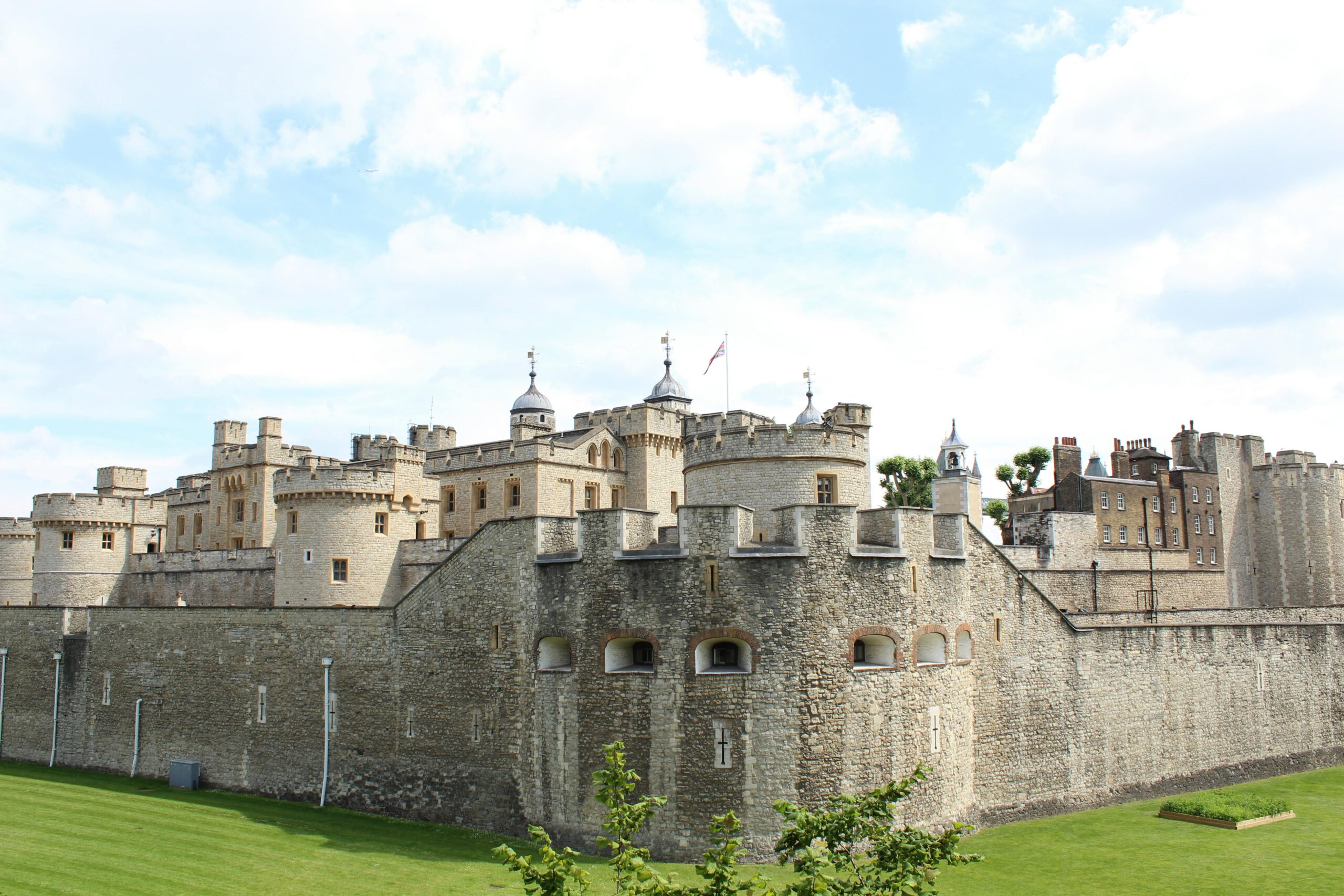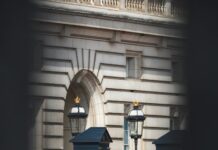When it comes to navigating the bustling streets of London, understanding the zip code system, known as postcodes in the UK, is essential for both locals and tourists alike. Have you ever wondered how these codes can help you discover hidden gems in the city? The London postcode system is not just a series of letters and numbers; it’s a gateway to exploring diverse neighbourhoods, from the historic charm of Westminster to the vibrant energy of Shoreditch. Each postcode, like EC1A or SW1A, unlocks unique insights about the area’s culture, cuisine, and attractions. But what makes these codes so crucial for finding your way around? As you delve into the world of London zip codes, you’ll uncover fascinating facts and tips on how they can enhance your travel experience. Whether you’re planning a visit or you’re a long-time resident, mastering the postcode system will enrich your understanding of this iconic city. So, are you ready to embark on a postcode adventure and find out how they can guide you to the best spots in London? Let’s dive in and explore the magic of London’s postcode map!
Unlock the Secrets of London’s Zip Codes: Which Area Suits Your Lifestyle Best?
Alright, let’s dive into the world of zip codes in London, shall we? Now, if you’re not familiar with it, London is a massive place, right? And, you know, zip codes here are known as postcodes. Yep, that’s right! In the United Kingdom, particularly in London, we don’t really use that American term. It’s all about those postcodes, which are super important for sorting mail and, I guess, for finding your way around if you’re not familiar with the area.
So, London’s postcode system is kinda like a jigsaw puzzle, with each area having its own unique code. These postcodes are made up of letters and numbers, and they can be a bit confusing. For example, you’ve got areas like EC1, which stands for East Central London, and then there’s WC1, which is West Central. Not really sure why this matters, but it’s crucial if you wanna send a letter or, you know, order a pizza and want it delivered to the right spot!
Here’s a little breakdown to make it clearer for you.
| Area | Postcode | Description |
|---|---|---|
| City of London | EC1 | This is the heart of London, full of history and finance. |
| Westminster | SW1 | Home of the government and famous landmarks. |
| Camden | NW1 | Known for its markets and vibrant culture. |
| Kensington | SW7 | A posh area with lots of museums and parks. |
Maybe it’s just me, but I feel like there’s something magical about knowing these little tidbits. Like, if you’re in Camden and you tell someone you’re in NW1, they might think you’re a local or something! It’s all about the bragging rights, am I right?
Now, if you’re trying to understand the zip code for United Kingdom London, you might want to remember that each region goes from the general to the specific. So, EC is East Central, and then the numbers narrow it down even more. If you’re hunting for a specific place, you should probably know the full postcode. For example, if I say I’m in EC1A 1BB, you might think “Wow, this person knows their stuff!” Or you might be thinking, “Who cares?” Either way, it’s a bit of fun, right?
Don’t get me started on how they’re used in navigating London, though. Google Maps loves them, and it’s like magic when you type in the postcode and suddenly you’ve got directions. But I have to wonder, what did people do before smartphones? Did they actually use maps? Crazy, right?
And speaking of navigating, I’ve got a handy list of some popular postcodes in London.
| Postcode | Area | Famous For |
|---|---|---|
| W1 | Mayfair | Luxury shopping and fine dining. |
| E1 | Whitechapel | Rich history and diverse culture. |
| N1 | Islington | Trendy restaurants and theatres. |
| SE1 | Southbank | The London Eye and Tate Modern. |
I mean, if you’re in Mayfair, you might want to flash some cash, right? But if you’re in Whitechapel, you’re probably more into historical sites and a good curry. Not that there’s anything wrong with either option, but it’s just a different vibe, you know?
Now, let’s talk about how to actually find these postcodes. You could just Google it and get lost in the sea of results, or you could use the Royal Mail postcode finder. It’s a bit old school, but it works! You just pop in the address, and voilà! There’s your postcode. It’s like magic but without the wand and sparkles—kinda disappointing, if you ask me.
Also, if you’re ever feeling cheeky, you could tell someone you live in a postcode that doesn’t even exist. Like, “Oh, I live in Z1A 9ZZ.” Watch their faces twist in confusion! Priceless. But, hey, maybe I’m just a bit mischievous sometimes.
Now, if you’re looking to visit London and you want to impress your mates with your postcode knowledge, I’d say practice a few of the well-known ones. You can drop them in casual conversations, and people might think you’re all sophisticated and stuff.
In the end, understanding the zip code for United Kingdom London isn’t just about getting your letters delivered. It’s like a key to unlock the city’s secrets, its history, and its culture. You could say it’s a postcode adventure waiting to happen! So,
The Complete Guide to London Zip Codes: Find Your Ideal Neighbourhood Today!
When it comes to the zip code for United Kingdom London, it gets a bit tricky, right? I mean, it’s not like they just slapped on a single code for the whole city, which would have made life a whole lot easier! Instead, you got a whole bunch of them, like a buffet of postal codes that you gotta pick from. So, let’s dive into this postal quagmire, shall we?
First off, London’s postcode system is actually quite unique. The main format is something like “EC1A 1BB” or “W1A 0AA”. Like, what does it even mean? Well, the letters at the beginning indicates which area of London you’re in. EC stands for East Central, while W is for West. But, let’s be real, who actually remembers all that? Not really sure why this matters, but it does!
Here’s a little table to help you get your head around some of the areas and their corresponding postcodes:
| Area | Postcode Example |
|---|---|
| Central London | EC1A |
| North London | N1 |
| South London | SE1 |
| East London | E1 |
| West London | W1A |
So, if you’re looking to send a letter or package to someone in London, you’ll need to know their specific postcode. Otherwise, you could be sending stuff to the wrong part of the city, and that’s just a headache waiting to happen. I mean, can you imagine? “Oh, oops, I sent your birthday card to a completely different postcode!”
Now, while we’re on the subject, there’s another layer of complexity with these zip codes for United Kingdom London. Some areas have multiple postcodes, which can be a bit confusing, right? Like, you could be in the same borough but have a totally different postcode depending on the street. “Oh, you live on Elm Street? Sorry, that’s SE11, not SE12!”
Let’s just do a quick rundown of some notable London postcodes, just so you can sound like you know what you’re talking about next time someone brings it up in conversation:
- EC1: The heart of the city, full of history and stuff.
- N1: A hipster haven, full of cafes and quirky shops.
- SW1: Where all the politicians hang out, I guess.
- W2: Home to the famous Paddington Bear. Seriously, who doesn’t love bears?
- E2: This is where you’ll find Shoreditch, the land of trendy murals and overpriced coffee.
I mean, maybe it’s just me, but the postcode game feels more complicated than it needs to be. You got the letters, then the numbers, then the space, and then more letters! Who thought this was a good idea?
And speaking of which, let’s not forget about the Royal Mail. They handle all this postal madness, and they have a whole section on their website dedicated to helping you find the right postcode. But honestly, who wants to navigate through that? It’s like a maze, and you’ll probably end up just Googling “postcodes for London” instead.
Now, if you’re ever in the situation where you’re sending something to London and need to know the postcode, here’s a practical insight: just ask the person for their postcode. It’s like asking for directions; don’t be shy about it! “Hey mate, what’s your postcode?” They’ll either be grateful or think you’re a bit dodgy, but at least you won’t be sending your parcel to the wrong postcode!
Also, don’t get too hung up on the “zip code for United Kingdom London” thing. It’s a bit of a misnomer, really, since the UK doesn’t actually use zip codes in the same way the US does. They’ve got postcodes. So, if you’re chatting with your mates across the pond, just keep that in mind. You might sound clever, like you’ve got it all sorted, when really you’re just dodging a common mix-up.
In summary, the postcode system in London is a bit of a rabbit hole. You can go deep into the intricacies, or you can just keep it simple. But, whatever you do, don’t forget to check the postcode before sending anything. Otherwise, you might just be sending your love letters to someone in a completely different part of London, and that could lead to some very awkward situations, trust me!
10 Must-Know Facts About London Zip Codes That Will Change How You See the City
When you think of London, you probably think of double-decker buses, maybe Big Ben, or perhaps the Queen (well, not literally her, but you get the point). But have you ever considered the whole zip code thing? In the UK, they call it postcode, which is like a zip code, but fancier, I suppose. London is a massive place, and its postcode system is a bit like a confusing maze, full of twists and turns. So let’s dive into the world of zip code for united kingdom london and see what we can unearth, shall we?
First off, postcode in London can be divided into several zones. Like, you’ve got your central London postcodes like WC1 and EC1. These are often the ones people think of when they imagine the heart of the city. What’s the difference between WC and EC? Honestly, not really sure why this matters, but WC stands for “Western Central” and EC for “Eastern Central.” If you’re not careful, you might end up in the wrong part of town just because you mistyped the postcode. Gotta love technology, right?
Here’s a little breakdown of some of the key postcode areas in London.
| Area | Postcode Examples | Notable Locations |
|---|---|---|
| Central | WC1, EC1 | The British Museum, St. Paul’s Cathedral |
| West London | W1, W2 | Buckingham Palace, Hyde Park |
| East London | E1, E2 | Tower of London, Brick Lane |
| North London | N1, N2 | Camden Market, Islington |
| South London | SE1, SE10 | The Shard, Greenwich |
Now, if you’re living in London or planning to visit, knowing your postcode can save you a lot of hassle. Imagine trying to book a taxi or getting a delivery, and you accidentally give them the wrong postcode. Yeah, not fun. It’s like ordering a pizza and getting a salad instead. Like, really? Who wants a salad when you can have cheesy goodness?
Another interesting thing is that London postcodes aren’t just random letters and numbers thrown together. They actually serve a purpose. They help with the sorting of mail. I mean, who knew? It’s like the post office is a giant puzzle, and the postcodes are the pieces that fit together. And if you think about it, it’s kind of amazing how they manage to deliver all those letters and parcels with such precision. But sometimes, I wonder if they get mixed up, you know? Like, what if your birthday card ends up in Timbuktu because of a postcode error?
Let’s not forget about the infamous postcode lottery. No, not the one where you win millions (though that would be fab). It’s more like how some areas have higher property values due to their postcode. For instance, Chelsea (SW3) is known for being quite posh and expensive, while other areas like Barking (IG11) might be more affordable. It’s a postcode thing, I guess. But hey, maybe it’s just me, but I think it’s a bit unfair. Why should a few letters determine the cost of living?
For anyone looking to move to London, here’s a quick list of some popular postcodes and their general vibe:
- N1: Trendy and artsy, think Islington with its cute cafés.
- W1: Known for luxury shopping and high-end living, proper posh.
- E2: Hipster central. Shoreditch, anyone?
- SE1: Bustling with tourists, but also home to some great eateries.
And if you’re wondering about how to find a postcode, it’s pretty easy. Just hop onto Google and type in “postcode lookup for london” and voilà, you’re on your way. Or, you could use one of those fancy apps. But honestly, where’s the fun in that? I mean, using an app to find a postcode is like using a fork to eat soup; it works, but it just seems wrong.
Now, if you’re still with me, you might be asking how to actually use these postcodes, right? Well, they come in handy for navigating the city, applying for jobs, registering for services — you name it. It’s like a secret handshake that says, “I belong here.” And let’s be real, who doesn’t want to feel like they belong?
In summary, the zip code for united kingdom london isn’t just a random collection of letters and numbers. It’s a gateway to understanding the city, its culture, and even its people. Whether you’re planning to stay for a short visit or thinking of making the big move, knowing your postcode is essential. It’s the little things that make a big difference, after all.
How to Use London Zip Codes to Discover Hidden Gems in Your Perfect Community
So, you’ve stumbled upon the world of zip codes in London, huh? Not really sure why this matters, but hey, it’s a big ol’ city. London, being the capital of the United Kingdom, got a pretty unique way of doin’ things, including its postal system. In fact, the zip code for United Kingdom London is kinda interesting, if you think about it. But first, let’s clear up one thing: in the UK, we don’t really call them “zip codes,” we call them postal codes. Small detail, but it matters.
London’s postal code system is like a patchwork quilt of letters and numbers, yeah? It’s all quite fascinating, really. There’s a whole system that divides the city into areas, each with their own set of codes. You got the central part of London with codes starting with “EC” (that’s Eastern Central, if you’re curious), and then you have “WC” for Western Central. Sounds fancy, right? Here’s a little breakdown to help you out:
| Area | Postal Code |
|---|---|
| Central London | EC1 to EC4 |
| West London | W1 to W14 |
| East London | E1 to E20 |
| South London | SE1 to SE28 |
| North London | N1 to N22 |
To be honest, this is just scratching the surface. There’s more to it than just letters and numbers, that’s for sure. Maybe it’s just me, but I feel like the postal codes are a bit of a maze. When someone mention a postal code, you might be like, “What on earth does that mean?”
For instance, you’ve got the famous NW1 postcode, which is, guess what? The area around Camden Town! Ever been? It’s a cool place, lots of markets and music. You can’t really go wrong. And speaking of Camden, your zip code for United Kingdom London can really help you figure out where to live, or maybe just avoid.
Here’s the thing, though: not every postcode is created equal. Some areas are, let’s say, more desirable than others. You might wanna look at the zip code for United Kingdom London if you’re thinking of moving there. For example, the SW1A postcode is home to Buckingham Palace. So, if you fancy living next to the Queen (or her corgis), you might want to check that out.
Now, let’s not forget about the outer boroughs. They’ve got their own vibe, too. Areas like Croydon and Barking have postal codes like CR0, which are a bit less glitzy but still have their charm. But then again, who am I to judge? Maybe you love the hustle and bustle of the area without the glitz, right?
Here’s a fun fact: the postal code system in London was introduced way back in 1857. That’s yonks ago! And it’s been tweaked and changed over the years. I mean, could you imagine the chaos if we didn’t have these codes? Letters would end up everywhere.
So what’s in a postcode, you might ask? Well, if you’re sending a letter, it tells the postal service exactly where to go. It’s like a mini GPS, kinda. But it also tells you a lot about the area — the vibe, the shops, the people. It’s a bit like Tinder for places, really. You swipe right on a postcode and you might just find your next favourite neighbourhood.
And let’s not forget about the quirks! Some places have really long postal codes, while others are quite short. For example, you might have a postcode like E2 9QT, which might sound like a secret code to get into a club or something. You know, the kind of place where you pretend to be fancy but really just want a pint.
Now, if you’re planning to visit London, you’d probably want to know what the zip code for United Kingdom London is for touristy spots. Here’s a quick list of some popular places and their codes:
| Attraction | Postal Code |
|---|---|
| The British Museum | WC1B 3DG |
| The Tower of London | EC3N 4AB |
| The London Eye | SE1 7PB |
| Buckingham Palace | SW1A 1AA |
| Big Ben | SW1A 0AA |
So there ya have it! A little guide to London’s postal codes, sprinkled with a bit of sarcasm and charm. Not the most conventional stuff, but who needs conventions anyway? Whether you’re planning a visit, moving, or just curious, knowing the zip code for United Kingdom London
Exploring London’s Diverse Zip Code Areas: Where Should You Call Home?
When it comes to understanding the zip code for United Kingdom London, things can get a bit tricky, right? Like, you might think, “What’s the big deal with zip codes?” But believe me, it matters, especially if you’re trying to send a letter or maybe even order takeout? You wouldn’t want your pizza delivered to the wrong part of town, that’s for sure.
So, let’s dive into the London postal code system. In the UK, we don’t actually use the term “zip code” like they do in the States. We got something called a postcode, which is what everyone’s really talking about when they mention zip codes. It’s a bit like a secret code that helps the postal service figure out where to send your stuff. And London? Oh boy, it’s got a whopping number of postcodes. You can find everything from London zip code areas to specific neighbourhoods, and it’s all a bit overwhelming, if you ask me.
Now, here’s a fun fact: London’s postcode system is divided into several areas, each with its own unique codes. For example, you’ve got the well-known postcode for London which starts with “E”, “N”, “W”, “SW”, and a few others. Not really sure why they’ve chosen those letters, but that’s just how it is, right? A table would probably help here, so let’s take a look at some of the main postcode districts in London:
| Area | Prefix | Notable Districts |
|---|---|---|
| East | E | East London, Stratford, Hackney |
| North | N | North London, Islington, Camden |
| West | W | West London, Kensington, Hammersmith |
| South | S | South London, Brixton, Clapham |
| SW | SW | Southwest London, Wimbledon, Putney |
So, if you’re looking for a specific place, say, like Camden Market, you might be typing in NW1. It’s one of those postcodes that everyone seems to know about, and it’s also a bit trendy, if I’m honest. But what’s the deal with all these different areas? Maybe it’s just me, but it feels like you need a degree in geography to keep up with it all.
Now, let’s talk about how you can find a postcode for London if you’re ever in need. You can whip out your smartphone and just Google it! Seriously. Just type in the name of the place and “postcode” and voilà, there it is. Or you could use a postcode finder tool, which is basically the same thing but a bit more official. But I dunno, sometimes I feel like those tools can be a bit hit or miss. You know what I mean?
Oh, and before I forget, if you’re planning on moving to London or even just visiting, it’s good to know that some postcodes are worth more than others. It’s all about location, right? Areas like Chelsea and Kensington have postcodes that can make your wallet feel a bit lighter, if you catch my drift. A little table of average house prices in different postcode areas might give you an idea:
| Postcode Area | Average House Price |
|---|---|
| E1 | £450,000 |
| N1 | £700,000 |
| W8 | £1,500,000 |
| SW3 | £2,000,000 |
So, if you ever find yourself in the market for a place in London, keep an eye on those numbers. They can really make or break your budget. And let’s be real, who doesn’t want to live in a fancy postcode? It’s like a badge of honour or something.
One more thing to consider is the Royal Mail. They’re the folks who handle all the postcodes, and they’ve got a whole system in place. If you ever tried sending a letter without the right postcode, you might as well be throwing it in the bin, because it’s not gonna get delivered. I mean, come on, it’s just a few letters and numbers, how hard can it be?
In the end, navigating the London postal code system doesn’t have to be rocket science. Whether you’re sending a letter or looking for a new flat, just remember to check that postcode. It might seem silly or trivial, but trust me, you’ll thank yourself later. And if you ever get confused, just ask a Londoner. They’ll probably have a few stories about getting lost in the postcode jungle.
Conclusion
In conclusion, understanding London’s postcode system is essential for both residents and visitors navigating this vibrant city. The unique alphanumeric structure of London postcodes not only aids in efficient mail delivery but also helps in identifying specific areas, making it easier to explore the diverse neighbourhoods. We’ve discussed how the postcode system is divided into several zones, each with its own distinct characteristics, from the bustling streets of Central London to the quieter suburbs. Additionally, the importance of accurate postcode knowledge in online services, transport, and even property searches cannot be overstated. As London continues to grow and evolve, staying informed about its postal codes will enhance your experience in this dynamic metropolis. Whether you’re relocating, visiting, or planning a business venture, make sure you familiarise yourself with the relevant postcodes to navigate London with confidence. Embrace the journey and discover all that this iconic city has to offer!













